Why is my Casio Pro Trek PRW-2000-1ER time off by hours?
- AAaron AlexanderAug 17, 2025
The Home City setting on your Casio Watch may be incorrect. Verify that your Home City setting is correct and adjust it if necessary.
Why is my Casio Pro Trek PRW-2000-1ER time off by hours?
The Home City setting on your Casio Watch may be incorrect. Verify that your Home City setting is correct and adjust it if necessary.
Why is my Casio Pro Trek PRW-2000-1ER World Time City off?
The time for your World Time City being off on your Casio Watch could be due to incorrect switching between standard time and daylight saving time. See 'To specify standard time or daylight saving time (DST) for a city' for more information.
Why is my Casio Pro Trek PRW-2000-1ER Watch time off by one hour?
If you are using the watch in an area where time calibration signal reception is possible, see 'To configure Home City settings'. If you are using the watch in an area where time calibration signal reception is not possible, you may need to change your Home City’s standard time/daylight saving time (DST) setting manually. Use the procedure under 'To change the current time and date settings manually' to change the standard time/daylight saving time (DST) setting.
What causes incorrect direction readings on my Casio Pro Trek PRW-2000-1ER Watch?
Incorrect direction readings on your Casio Watch can be caused by incorrect bidirectional calibration. Try performing bidirectional calibration again. Also, nearby sources of strong magnetism, like household appliances, large steel bridges, steel beams, or overhead wires, can interfere with readings. Move away from large metal objects and try again. Note that digital compass operation cannot be performed inside a train, boat, etc.
Why does ERR appear on my Casio Pro Trek PRW-2000-1ER Watch display while using a sensor?
If 'ERR' appears while using a sensor on your Casio Watch, it could be due to strong impact causing sensor malfunction or improper contact of internal circuitry. Restart the measurement. If the error appears again, it indicates a problem with the sensor.
What to do if the barometric pressure differential pointer does not appear on the Casio Watch display?
If the barometric pressure differential pointer does not appear on your Casio Watch display, it may indicate a sensor error. Try pressing the 'B' button again. Also, it may be that the displayed current barometric value is outside of the allowable measurement range (260 to 1,100 hPa).
Why am I having problems taking direction readings indoors with my Casio Pro Trek PRW-2000-1ER?
Problems taking direction readings indoors with your Casio Watch can occur if a TV, personal computer, speakers, or another object is interfering with terrestrial magnetism readings. Move away from the object causing the interference or take the direction reading outdoors.
What to do if ERR appears on Casio Pro Trek PRW-2000-1ER Watch after calibration?
If ERR appears on the calibration screen of your Casio Watch and disappears after about one second, try performing the calibration again. If ERR keeps appearing, contact your original dealer or nearest authorized CASIO distributor to have the watch checked.
How to fix different direction readings at the same location on my Casio Pro Trek PRW-2000-1ER?
Different direction readings at the same location on your Casio Watch can be caused by magnetism generated by nearby high-tension wires interfering with the detection of terrestrial magnetism. Move away from the high-tension wires and try again.
Why won't my Casio Watch resume operation after light exposure?
If your Casio Watch does not resume operation after light exposure, it may be because the power level has dropped to Level 5. Continue exposing the watch to light until the battery power indicator shows 'H' or 'M'.
Explains battery indicator levels, power recovery modes, and charging times.
Details how to turn Power Saving on/off and its operational impact.
Guides on checking battery, Home City, DST, and current time settings.
Explains how the solar cell charges the watch and provides charging tips.
Explains the automatic time calibration signal reception process.
Details the steps for performing a manual time calibration signal receive operation.
Describes signal level indicators and checking latest reception results.
Explains how to enable or disable the auto receive function for time signals.
Explains how to navigate between the watch's different operational modes.
Shows different ways to view time and date information in the Timekeeping Mode.
Guides on setting the Home City and daylight saving time for accurate timekeeping.
Provides detailed steps for manually setting the current time and date.
Explains precautions and procedures for bidirectional calibration of the compass.
Details how to enter/exit the mode and take pressure/temperature readings.
Covers northerly calibration, bidirectional calibration, and bearing memory.
Explains using the compass for map setting, location finding, and bearings.
Highlights potential issues and precautions for accurate direction readings.
Details barometric pressure display units and measurement ranges.
Details temperature display units and measurement ranges.
Explains altitude measurement based on air pressure and reference values.
Guides on taking altitude readings, using the altitude graph, and auto measurement.
Details the options for selecting altitude auto measurement intervals.
Explains how to use the altitude differential value for tracking elevation changes.
Details the procedure for saving manual altitude readings with date and time.
Explains how maximum, minimum, ascent, and descent values are saved.
Guides on how to specify units for altitude, pressure, and temperature.
Explains how to view manually saved and auto-saved altitude data.
Provides instructions on how to clear specific memory areas for altitude data.
Guides on how to view sunrise and sunset times for a specific date and location.
Provides lists of city data, including latitude, longitude, and UTC offsets.
Explains how to use the stopwatch for measuring elapsed time and split times.
Details how to set and perform countdown timer operations with alarms.
Guides on setting alarm times, turning alarms on/off, and testing alarms.
Explains manual illumination, auto light switch, and illumination precautions.
Details how to turn the button operation tone on and off.
Addresses issues like incorrect time, sensor errors, and signal reception problems.
Provides technical details including accuracy, measurement ranges, and power supply.
Explains battery indicator levels, power recovery modes, and charging times.
Details how to turn Power Saving on/off and its operational impact.
Guides on checking battery, Home City, DST, and current time settings.
Explains how the solar cell charges the watch and provides charging tips.
Explains the automatic time calibration signal reception process.
Details the steps for performing a manual time calibration signal receive operation.
Describes signal level indicators and checking latest reception results.
Explains how to enable or disable the auto receive function for time signals.
Explains how to navigate between the watch's different operational modes.
Shows different ways to view time and date information in the Timekeeping Mode.
Guides on setting the Home City and daylight saving time for accurate timekeeping.
Provides detailed steps for manually setting the current time and date.
Explains precautions and procedures for bidirectional calibration of the compass.
Details how to enter/exit the mode and take pressure/temperature readings.
Covers northerly calibration, bidirectional calibration, and bearing memory.
Explains using the compass for map setting, location finding, and bearings.
Highlights potential issues and precautions for accurate direction readings.
Details barometric pressure display units and measurement ranges.
Details temperature display units and measurement ranges.
Explains altitude measurement based on air pressure and reference values.
Guides on taking altitude readings, using the altitude graph, and auto measurement.
Details the options for selecting altitude auto measurement intervals.
Explains how to use the altitude differential value for tracking elevation changes.
Details the procedure for saving manual altitude readings with date and time.
Explains how maximum, minimum, ascent, and descent values are saved.
Guides on how to specify units for altitude, pressure, and temperature.
Explains how to view manually saved and auto-saved altitude data.
Provides instructions on how to clear specific memory areas for altitude data.
Guides on how to view sunrise and sunset times for a specific date and location.
Provides lists of city data, including latitude, longitude, and UTC offsets.
Explains how to use the stopwatch for measuring elapsed time and split times.
Details how to set and perform countdown timer operations with alarms.
Guides on setting alarm times, turning alarms on/off, and testing alarms.
Explains manual illumination, auto light switch, and illumination precautions.
Details how to turn the button operation tone on and off.
Addresses issues like incorrect time, sensor errors, and signal reception problems.
Provides technical details including accuracy, measurement ranges, and power supply.
| Brand | Casio |
|---|---|
| Model | PRW-2000-1ER |
| Category | Watch |
| Display | Digital |
| Water Resistance | 200 meters |
| Solar Powered | Yes |
| Altimeter | Yes |
| Barometer | Yes |
| Compass | Yes |
| Thermometer | Yes |
| World Time | Yes |
| Stopwatch | Yes |
| Countdown Timer | Yes |
| Alarm | Yes |
| LED Backlight | Yes |
| Case Material | Resin |
| Band Material | Resin |
| Radio reception | Yes |
| Battery Life | 6 months without solar charging |
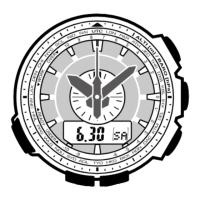
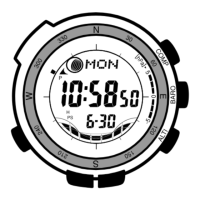
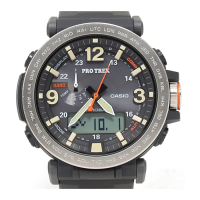
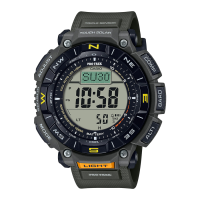
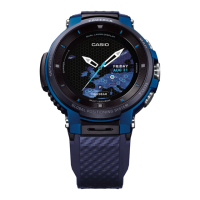
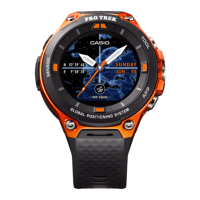
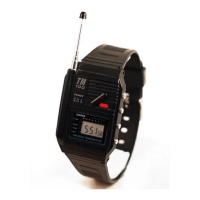



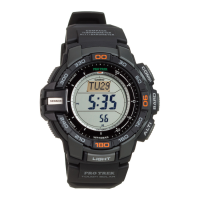

